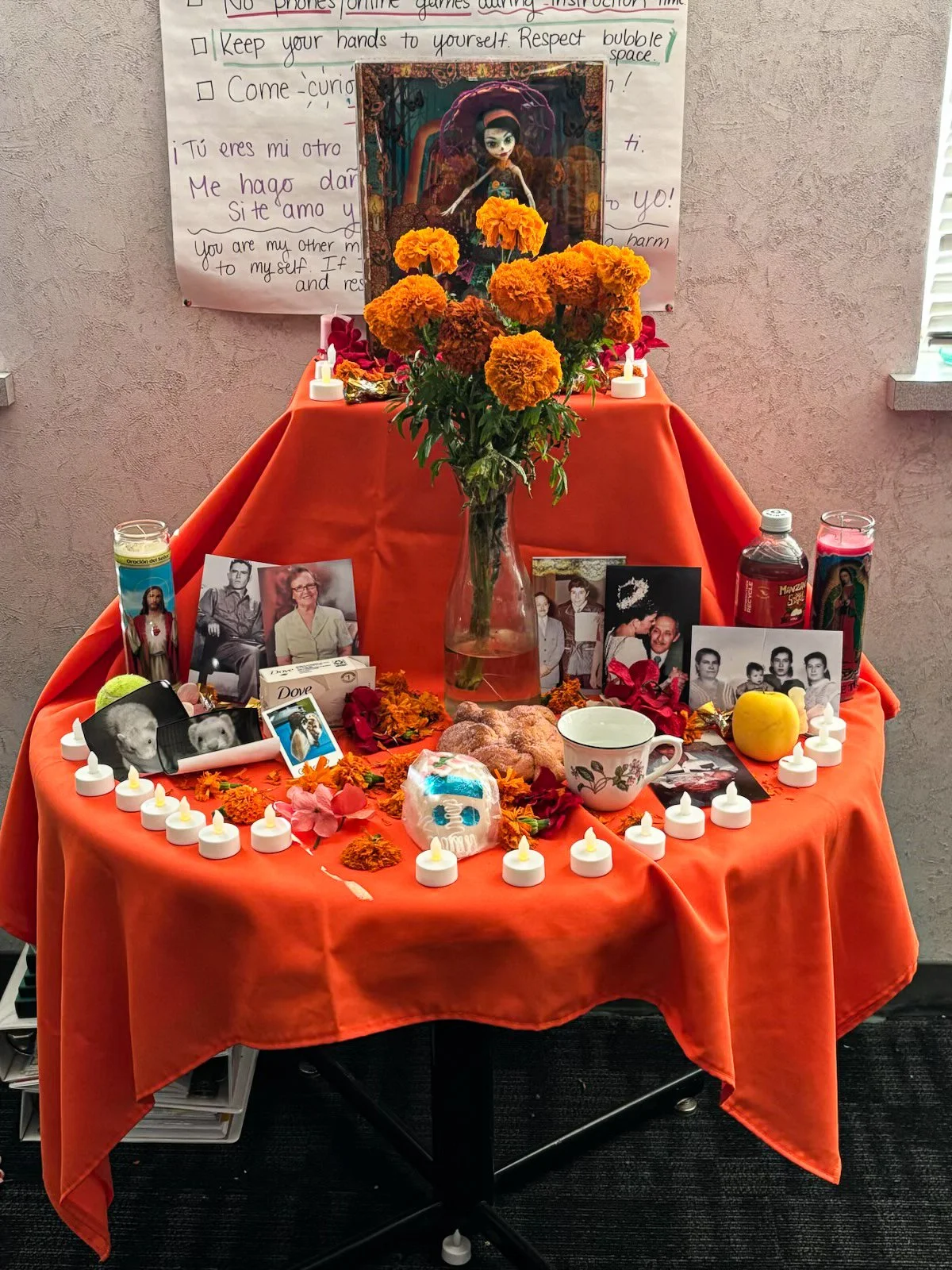A not-so-spooky season: the world of fall festivities
An ofrenda, often used for celebrating Dia de los Muertos (The Puma Prensa / Esmond Hoang)
By Ryan Win-Ruan, News Editor
For all the pumpkins and cornucopias that come to mind when autumn is mentioned, there are dozens more holidays and celebrations from around the world. Even at Maria Carrillo High School, there are a myriad of festivities celebrated throughout the mid-autumn months of October and November. But with the diversity of the school’s community, it can be hard to keep them all straight. Among the many, many festivals of the October-November period, a few of the following are commonly celebrated among MCHS students and staff.
In the school’s East Asian community, two very popular holidays are the Chinese Mid-Autumn Festival, or Zhongqiujie, and Korean Chuseok. They are both harvest festivals meant to celebrate farming–a common trend for Autumnal holidays–and take place from October 5-7 this year. Though originally meant as a form of prayer for a good harvest, they now celebrate family and gathering, often accompanied by feasts and games. In fact, mooncakes originate from China’s Mid-Autumn celebrations, which, as the legend goes, began as a way to worship the moon goddess, Chang’e. Chuseok is a time to visit hometowns and family, also centering around meals with relatives and unique festivities. It originates from the Korean kingdom of Silla, and, like Zhongqiujie, has a truly ancient and rich history.
Very similarly to Halloween, the Celtic festival of Samhain is a time of connecting with the dead and supernatural, a common theme amongst European autumnal holidays. It is one of four Celtic seasonal festivals, and marks the beginning of the “darker half” of the year: winter. In fact, it is the origin of Halloween, which evolved out of the traditional rituals as it spread to the United States and morphed into what we know it as today.
In India, the festival of Diwali is commonly celebrated, and includes many familial activities and feasts. Diwali, also known as the Festival of Lights, is a five day long holiday celebrating Hindu gods and the victory of good over evil. It is a holiday with tons of regional variation, but the triumph of goodness remains a common theme. Diwali has also gained traction in a diverse community of religious followers outside of Hinduism, like Jainism, Sikhism, and Buddhism.
Unfortunately, many of these holidays are less popular in California due to the fact that they come from cultures which are often oceans away. Much closer to MCHS, the Day of the Dead, or Dia de Los Muertos, is celebrated in Mexico and is mostly seen as a time for reuniting with dead ancestors. The holiday was originally a bundle of traditions from Spain that had blended with indigenous Mexican folklore during Spanish colonization of the region, and slowly changed into what we know today. At MCHS, some some locations, like the library or certain Spanish classrooms, have special altars and offerings for the deceased known as “ofrendas,” which is Spanish for “offering,” and are available to the public for the duration of the holiday.
MCHS Spanish teacher Irania Guerrero Diaz notes how some aspects of the holiday, like the focus on death, are direct holdovers from groups like the Aztecs, while other details, such as the date (November 1 and 2 coincide with All Souls’ Day and All Saints’ Day, respectively), are notable Spanish/Catholic influences. To Diaz, the holiday is an incredibly diverse and rich tapestry of traditions, and one that she enjoys celebrating with her family. Unfortunately, Dia laments that “it’s almost a tradition that’s going away,” though she appreciates the fact that movies like Coco and the Book of Life have kept the holiday alive in many younger groups.
Fellow Spanish teacher Will Huntsinger states that “many of [his] students, for whom it is part of their life and their culture…[allow him to see] cultural perspectives that [he] really admire[s],” and would not otherwise get to see. He is incredibly moved by the holiday’s respect for the dead, and finds the familial comfort and love instilled by the holiday to be a source of great inspiration.
Like Diaz, he sees the differences between the two cultural roots of the holiday, with the lighthearted tone of the indigenous contrasting greatly to the more serious Catholic practices. The comparisons between the two provide a strong message of cultural perseverance, and the fact that diversity can come from combinations of completely different belief sets is truly fascinating to consider.
Diaz enjoys the great diversity of the many fall celebrations at MCHS because, to her, “it brings up the opportunity to share other cultures’ similar experiences,” and is a time of mutual learning and understanding.

